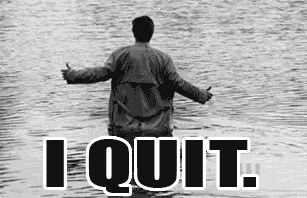Post#1819 » by Knicks_Fan2 » Fri Jul 7, 2017 1:52 pm
From Lowe's article on why cap flexibility will be increasingly important. Looking at last season as a precedent is just ignorant.
Winner: Teams with cap room next summer
Winner: The 2016 free agency class
Loser: Most other players
Last summer, almost the entire league had an easy route to $20 million-plus in cap room. Next summer, we could enter free agency with only three or four teams hoarding that much space. Last summer's spending orgy, amid a one-time-only mega-spike in the cap, soaked up more of this season's space than anyone expected -- especially when the league's projected cap fell from $107 million a year ago, to $101 million, and then finally to $99 million. (The league's most recent projection for the 2018-19 season, sent to teams last week, sits at $102 million, per league sources -- a tiny uptick.)
Imagine being Patrick Patterson. You watch your bench partner, Bismack Biyombo, an inferior player, sign for $17 million per season last summer to be a backup. You smile, knowing your payday is coming. Then free agency starts, the limited cap room dries up, and you sign for less than $17 million combined over three seasons.
NBA Trade Tracker: Paul George heading to OKC
Which players are on the move this summer? We have a rundown of the latest trades throughout the league.
The failure of the union and league to agree on a cap-smoothing proposal benefited one group of free agents -- last summer's class -- at the expense of almost everyone else. We are now back in the old, forgotten cap environment, where room is sparse. Even teams that look cheap now -- the Hawks, Kazoos (after their ludicrous Tim Hardaway Jr. offer sheet), Kings, Mavs, and Magic (with potential extensions for Elfrid Payton and Aaron Gordon) -- could spend themselves out of max cap space for next summer's derby over the next days and months. (The Hawks were willing to offer Hardaway a four-year deal in the $48 million range, league sources said. The Knicks blew that out of the water with a four-year, $71 million monstrosity.)
Player options for 2018-19 that looked sure to be rejected are more tempting now for a heap of guys: Austin Rivers, Kosta Koufos, Wesley Matthews, Garrett Temple, and many more. A rash of opt-ins would put more teams up against it.
The consequences ripple in every direction. Almost a dozen quality restricted free agents sit untouched, their reps crossing their fingers that Atlanta, Indiana or Brooklyn -- once the Wizards match on Otto Porter -- comes calling. Members of the 2014 draft class, up for extensions now, face a barren landscape if they chance it in free agency next summer. Do they settle for extensions below their now-outdated expectations? Do their teams play hard ball, daring them to gamble in a year? How did that work out for Utah and Hayward?
The Celtics are eyeing all of this, confident they can retain Thomas on a deal well below his max.
The disappearance of cap room should empower the few who will have it. Most of those teams are bad, with Utah, San Antonio and even Houston (if the Chris Paul experiment fails) lurking as exceptions. Stars don't go to bad teams unless they can join up -- a rare double the Lakers clearly believe they have in the bag. Will everyone else blow room now on extensions and salary dumps -- as the Hawks just did by effectively paying $17 million in Jamal Crawford salary for a bad first-round pick and Diamond Stone?
Meet the new NBA, same as the old NBA.
Teams will have to get more creative, and perhaps take on more risk, in swaps of players making big money over multiple years. Internal development matters more than ever; teams can go over the cap to re-sign their own players, and for most of the league, that will be the most accessible path to improvement. Expiring contracts will regain some of the trade value they lost.




































